 Petzlover
Petzlover Irish Staffordshire Bull Terrier is originated from Ireland but Schweizer Niederlaufhund is originated from Switzerland. Both Irish Staffordshire Bull Terrier and Schweizer Niederlaufhund are having almost same height. Both Irish Staffordshire Bull Terrier and Schweizer Niederlaufhund are having almost same weight. Both Irish Staffordshire Bull Terrier and Schweizer Niederlaufhund has almost same life span. Both Irish Staffordshire Bull Terrier and Schweizer Niederlaufhund has same litter size. Both Irish Staffordshire Bull Terrier and Schweizer Niederlaufhund requires Low Maintenance.
Irish Staffordshire Bull Terrier is originated from Ireland but Schweizer Niederlaufhund is originated from Switzerland. Both Irish Staffordshire Bull Terrier and Schweizer Niederlaufhund are having almost same height. Both Irish Staffordshire Bull Terrier and Schweizer Niederlaufhund are having almost same weight. Both Irish Staffordshire Bull Terrier and Schweizer Niederlaufhund has almost same life span. Both Irish Staffordshire Bull Terrier and Schweizer Niederlaufhund has same litter size. Both Irish Staffordshire Bull Terrier and Schweizer Niederlaufhund requires Low Maintenance.
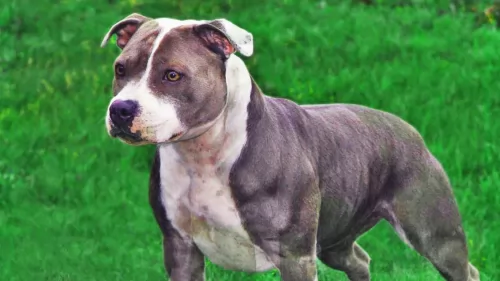 The Staffordshire Bull Terrier comes from Staffordshire, England, but the Irish Staffie was later developed by Irish breeders so its origin is essentially Ireland. They were developed from bulldogs and different terrier breeds.
The Staffordshire Bull Terrier comes from Staffordshire, England, but the Irish Staffie was later developed by Irish breeders so its origin is essentially Ireland. They were developed from bulldogs and different terrier breeds.
The dog was always used for bull baiting, but when this sport died out, the Irish breeders wanted to create a taller, leaner dog suited for dog fighting. When dog fighting was banned the breed became rare again, but today it has been restored and is essentially a popular companion pet.
 Originating in Switzerland, the Schweizer Niederlaufhund was established around 1900, when hunting became restricted to districts. The Swiss hunter needed a slower dog for the limited territory they could hunt in. Crossing selected Schweizer Laufhunds with Basset Hounds and other selected smaller, short legged hounds developed the Schweizer Niederlaufhund. By 1905 there was already a Schweizer Niederlaufhund Club.
Originating in Switzerland, the Schweizer Niederlaufhund was established around 1900, when hunting became restricted to districts. The Swiss hunter needed a slower dog for the limited territory they could hunt in. Crossing selected Schweizer Laufhunds with Basset Hounds and other selected smaller, short legged hounds developed the Schweizer Niederlaufhund. By 1905 there was already a Schweizer Niederlaufhund Club.
The Niederlaufhund became one of the best hunting dogs in the world, with its powerful body and ability to outhunt the Laufhund in tracking big game. Slower of course than the Laufhund it has a great sense of smell and an ability to easily find wounded animals. There are a few varieties, just like with the Swiss Hound again mostly because of their coloring. The Luzerner Niederlaufhund, the Jura Neiderlaufhund, and the Schwyzerlaufhund. They have musical voices that they use to communicate with the hunters and each other as well as that amazing sense of smell. They can hunt for hours without tiring and without much information from the hunter.
They are a cross breed not recognized by the larger kennel club such as the AKC and the UKC. They are recognized by the Dog Registry of America, Inc. (DRA), the American Canine Association Inc. (ACA) and most importantly by the Federation Cynologique Internationale (FCI). This last one is important because it could lead to recognition as a new breed by the UKC and the AKC.
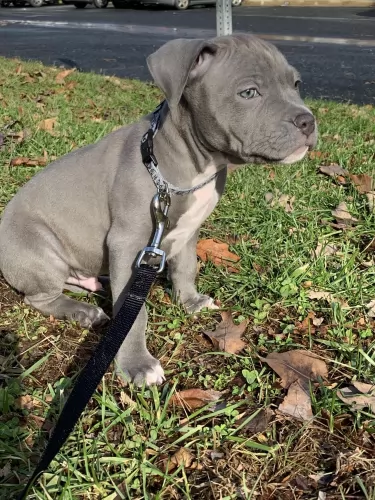 The Irish Staffordshire Bull Terrier is a medium sized pure-breed dog standing at roughly 43 to 48cm and weighing anything from 14 to 18kg.
The Irish Staffordshire Bull Terrier is a medium sized pure-breed dog standing at roughly 43 to 48cm and weighing anything from 14 to 18kg.
He has a short, smooth coat which can be a mix of colors such as fawn, tan, black or brindle. The coat can also be bi-colored such as in fawn and white or black and white. He is a powerfully built dog with short legs which are fairly wide apart.
He has a large head and short muzzle with powerful jaws.Sometimes when he pants after a hectic bout of exercise he gets a comical, grinning look on his face. The ears are semi-erect, semi-upright and he has a long tail.
Your Irish Staffy is a feisty, confident dog that has been known to have a temperament which leads towards aggression. It is why he should be trained and socialized to make him more amicable and obedient. He is an intelligent and alert dog, so won't have difficulty with training.
A well trained and socialized Irish Staffordshire Bull Terrier will get on well with children in the home as he is a playful, jovial dog, always ready for a game.
 The Schweizer Niederlaufhund is a medium size, short dog. They look like their cousins, the Schweizer Laufhund but smaller. Their body is just slightly longer than it is tall, so you are left with the impression of a mostly square dog. The Niederlaufhund is well put together, with strong legs, a noble head, long droopy ears, broad chest, and a low held tail.
The Schweizer Niederlaufhund is a medium size, short dog. They look like their cousins, the Schweizer Laufhund but smaller. Their body is just slightly longer than it is tall, so you are left with the impression of a mostly square dog. The Niederlaufhund is well put together, with strong legs, a noble head, long droopy ears, broad chest, and a low held tail.
The Small Lucerne Hound has a white cote with smooth speckles of black or gray making them appear to be blue.
The Small Bernese Hound has a tricolor coat of white, tan and black. There are tan marks on the eyebrows. There is a wire haired Small Bernese as well. He has a short beard.
The Small Schwyz Hound is smooth coated in white with orange or yellow-red patches. The wired haired version is extinct.
The Small Jura Hound is a single coated dog with a black coat and tan marking above his eyes as eyebrows as well. He might have some white as well.
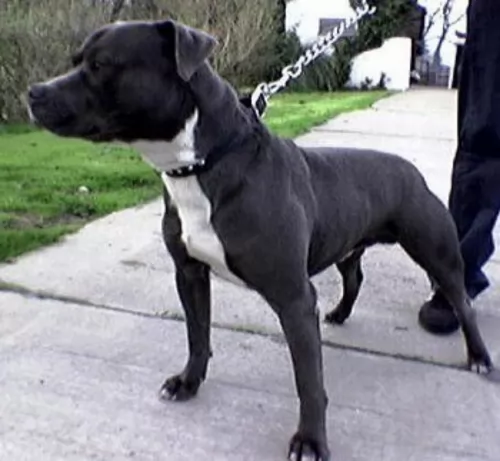 The older Irish Staffie has always been an aggressive type dog used for fighting, but today the modern breed is capable of being a splendid, entertaining, amicable pet with an even temper. He is feisty for sure, being brave, fearless, loyal and loving with his human family members.
The older Irish Staffie has always been an aggressive type dog used for fighting, but today the modern breed is capable of being a splendid, entertaining, amicable pet with an even temper. He is feisty for sure, being brave, fearless, loyal and loving with his human family members.
All it requires with this dog is to have a firm, loving upbringing, some training and socialization as well as good food and plenty of love and attention. Many dogs get labelled wrongly because of the humans that rear them the wrong way. When done correctly, the Irish Staffordshire Bull Terrier promises to be a wonderful, loving, loyal pet.
 Children friendliness – yes, they are but use caution around small children and small prey.
Children friendliness – yes, they are but use caution around small children and small prey.
3. Adaptability - needs room to run and explore – is very frustrated when confined.
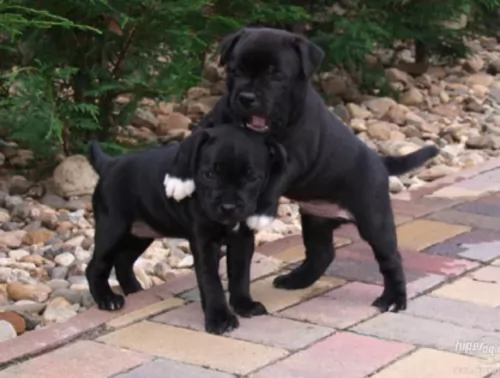 The Irish Staffordshire Bull Terrier, just like with any other dog, has a good chance of living a good number of years if he is fed properly. He can live to be anything up to between 10 and 16 years.
The Irish Staffordshire Bull Terrier, just like with any other dog, has a good chance of living a good number of years if he is fed properly. He can live to be anything up to between 10 and 16 years.
Say what you like, good nutrition and the lifestyle you provide for your Irish Staffie will determine how long he lives. An unhappy dog that has to beg for love and attention won't do well. Your Irish Staffie can live to a ripe age but he is still at risk for certain health problems.
These mast cell tumors are graded according to their location in the skin. Certain dogs like Boxers and bulldogs are more susceptible to mast cell tumors than other breeds, and the Irish Staffie isn't immune either. Most times the tumor develops in an older dog, though young dogs have also been known to develop the tumor. These tumors can be inactive for a while and then experience some rapid growth with some redness and fluid build up. Immediate veterinary intervention will be required.
 The Niederlaufhund Is prone to a very medical issues to keep an eye on. They include:
The Niederlaufhund Is prone to a very medical issues to keep an eye on. They include:
• Hip Dysplasia – This comes from hip joints that are not well formed and cause reduced mobility and pain. Parents can be tested before the dogs are bred to make sure their hips are good, and that dysplasia will not be passed to puppies. This dysplasia can cause arthritis and even lameness.
• Ear Infections – With long drooping ears it is easy for the dog to acquire ear infections. This is even more so for a hunting dog like the Niederlafhund. It is important to clean the dog’s ears on a regular basis.
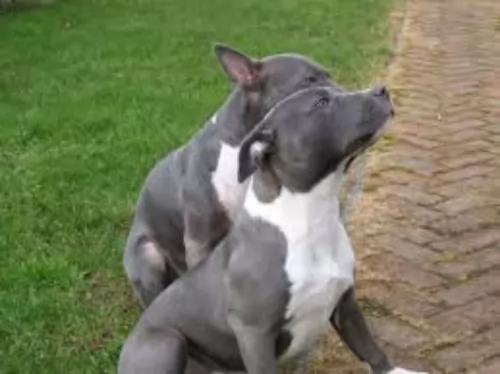 The Irish Staffie is an active dog, who is always game for anything. He will certainly need active owners who include him in all their activities. He has a lot of stamina and endurance and will want to join you on your walks, hikes and swimming. Ignoring his exercise needs can turn him into a restless, unhappy, frustrated, destructive dog.
The Irish Staffie is an active dog, who is always game for anything. He will certainly need active owners who include him in all their activities. He has a lot of stamina and endurance and will want to join you on your walks, hikes and swimming. Ignoring his exercise needs can turn him into a restless, unhappy, frustrated, destructive dog.
Having a short, smooth coat means your Irish Staffie being a low maintenance dog. He does shed a bit so his coat will need to be brushed at least twice a week to get rid of all those loose hairs. Its always a good opportunity to check him for fleas and ticks too.
If the short coat gets too dirty, a wipe down with a damp cloth can keep the coat bright and shiny. Certainly avoid bathing him too often as this can aggravate the skin.
Check his nails and trim them if they get too long. Check his ears and teeth as these are all problem areas which can contribute to your dog becoming ill.
Your Irish Staffie is such an energetic dog that he will need excellent food that promotes this energy. Whether you buy him the best commercially manufactured kibble, you want to also add in some home-made food such as cooked chicken, rice and vegetables as well as including some raw meat occasionally. The food you provide your Staffie with needs to be full of vitamins and minerals to avoid illness. Always make sure he has access to fresh, cool water.
 1Feeding the puppy - give 1 cup per day of high quality dog food divided into 3 meals.
1Feeding the puppy - give 1 cup per day of high quality dog food divided into 3 meals.
2.Feeding the adult – give one and one half cups of high quality dog food divided into 2 meals.
4. Games and Exercises – needs a lot of daily exercise and loves field trials, running and activities like barn hunt.